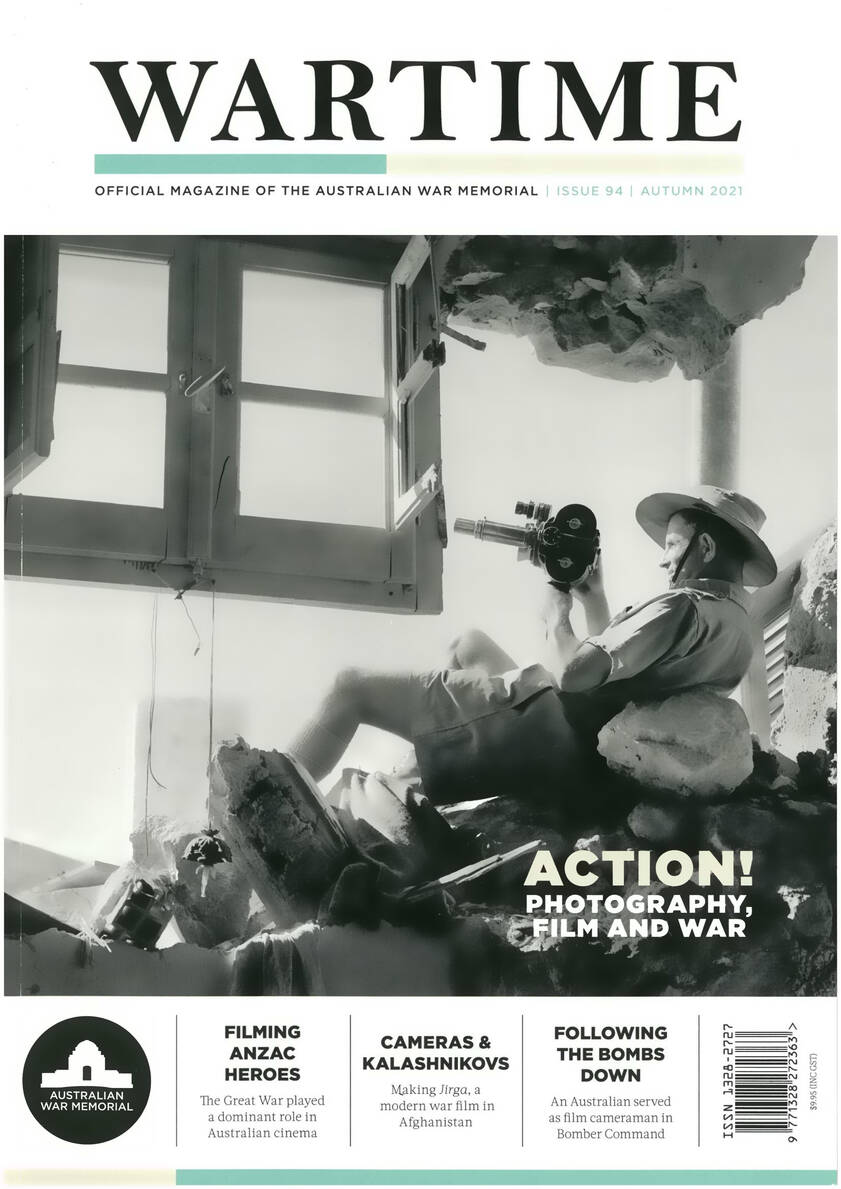The higher echelons on the Western Front were more open to learning about modern warfare than is commonly thought.
In the National Portrait Gallery in London hangs a large oil-on-canvas painting of twenty-two military officers. John Singer Sargent’s General Officers of World War I is an imposing piece of art: almost three metres tall and five metres wide, its military subjects are practically life-sized, bearing down upon the visitor looking up at them. Their demeanour is aloof and imperious. The only flashes of colour amidst the mass of khaki twill are the infamous red tabs on their lapels, denoting service on the General Staff.

John Singer Sergeant, General Officers of World War 1, National Portrait Gallery, London 1954
These men are – and remain – some of the most vilified figures of the First World War. They are the donkeys, the butchers and bunglers. They are Siegfried Sassoon’s “incompetent swine”. We continue to see caricatures of them immortalised on the big and small screen. Whether as General Melchett from Blackadder Goes Forth, Colonel Robinson from Gallipoli, or General Erinmore in 1917, the stereotype lives on: moustachioed, old, upper class, and out of touch. Yet the generals who are mocked and caricatured were the same generals who helped pioneer new tactics, supported new technologies, and actively tried to adapt and learn in a constantly changing environment. The experience of modern, industrial warfare required them to reconsider what they thought they knew, throwing up challenges related to their own and their soldiers’ inexperience. By looking beyond the parody, we see how these officers were both learning to command and overseeing learning in their own formations.
The challenges of modern war
For many British and Dominion commanders, the war they thought they would fight was very different from the war they actually fought. Wars of the near past had revealed a number of different, often contradictory, lessons. The American Civil War (1861–65) had offered a clear example of the scale of future conflict in terms of battles, casualties, numbers involved, and firepower deployed. Yet only five years later, the Franco-Prussian War (1870–71) seemed to demonstrate that you could have mass armies, but an incredibly short war – primarily of manoeuvre. More recently, the Russo-Japanese War (1904-05) had presaged the devastating power of machine-guns, but also the potential for siege warfare with barbed wire and trenches. It also pointed to the importance of the moral dimension – that, with an offensive spirit, a small island nation could defeat a superpower like Russia. These conflicts raised uncomfortable questions about the size, strength, and disposition of the British military in the years and decades leading up to 1914.
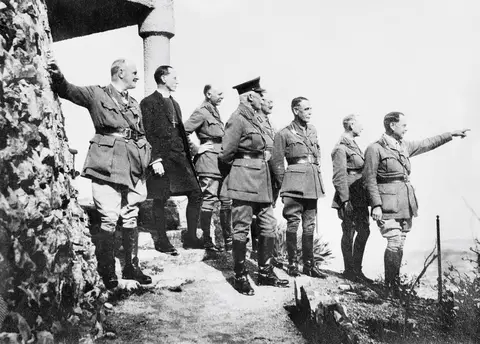
Leadership looks out from Mount of Olives. Sir Philip Chetode points and describes the battle which ended in the capture of Jericho.
L - R: Sir Edmund Allenby the Bishop of Jerusalem, Lieutenant Colonel Murray, Military Secretary to His Royal Highness the Duke of Connaught, Major General J S M Shea, Sir E S Bulfin, General Sir Harry Chauvel and Sir Philip Chetwode
When the First World War broke out, it soon became clear that the army was ill-equipped and understrength for the character of the conflict it faced. It was a small, professional force supported by reservists and part-time soldiers – whether in the Territorial forces, or the various imperial militia. It needed to expand, and fast. Yet how to command and train a rapidly growing army was a knotty question for senior and junior officers alike. The influx of new personnel had a number of knock-on effects. There was dilution of experience and de-skilling across the entire army. Gone were the well-drilled regular soldiers of the pre-war years, replaced instead by men who had often never held a rifle in their lives. As the army grew, so too did its need for commanders to lead its new formations and branches. Individuals were often rapidly promoted, requiring them to learn on the job. This tendency towards rapid promotion reinforced the problem of inexperience at all levels of command. Many of the army’s senior officers had not commanded anything larger than a division and were now expected to command corps and armies, while some of the battalion commanders on Gallipoli were only captains at the start of the war. This situation was further compounded by the fact that there was no deep reservoir of officers with experience of continental warfare.
Commanders tried to address these difficulties in different ways. Some went down the route of micro-management. During the 1916 Somme campaign, General Sir Hubert Gough, the commander of Reserve (later Fifth) Army, remarked how his subordinates were not “accustomed to obey orders”. “It requires a considerable exercise of firmness to get one’s orders carried out sometimes,” he complained, “and one has to closely supervise the plans of everyone!” Gough had no hesitation in employing the proverbial “long screwdriver”, bypassing his corps commanders and issuing detailed guidance direct to individual divisions and brigades.
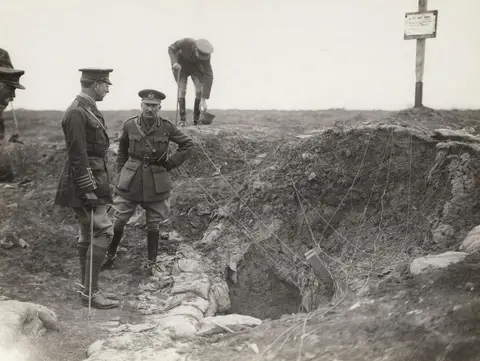
The King of the Belgians and British Army General Sir Hubert Gough at the entrance to a former German Army dugout. Ginchy, France. 16 May 1917.
Gough’s command style was dogged by his own inexperience, after having been promoted from brigade command to army command in less than two years. His hands-on approach with subordinates may have been suitable for a brigade commander, but it certainly was not appropriate for an army commander who needed to take a broader view of military matters.
We see a similar example with Lieutenant-General Sir Aylmer Hunter-Weston, the VIII Corps commander, who tended to try to plan for every eventuality. He did not want to take any chances in his preparation for the first day of the Somme campaign.
His orders spanned seventy pages under twenty-eight headings, containing prescriptive detail about artillery and mortar dispositions, and the formations to be adopted by the infantry, right down to the company level. In short, Hunter-Weston and his staff left subordinates very little scope for the use of initiative because they thought – misguidedly – that it was safer to prepare for anything and everything.
Other commanders thought that, while a firmer hand and prescriptive orders were necessary when commanding civilian soldiers, what was essential was more time and more training, which would engender greater trust between commanders and their subordinates. “Given time, the New Army will do anything,” remarked one divisional commander, “but it should be realised that the officers of the New Army take more time to digest orders and to pass them on to those who have to act on them.”
Sharing skills and lessons
It was not just civilian soldiers who needed time to adjust to war. The war forced many commanders into introspection, requiring them to reflect deeply on their approach to command. Unsurprisingly, individual officers did this in different ways with varying degrees of success. For Colonel Charles Rosenthal, his personal learning journey involved a tour around the Western Front. Wounded on Gallipoli in July 1915, Rosenthal was evacuated from the peninsula and sent to England to convalesce. While there he incessantly petitioned the War Office to allow him to visit the Western Front. After his fourth appeal, his request was granted, and Rosenthal was billeted with the British 1st Division in December 1915. For twelve days, Rosenthal attended lectures, spent time with British and French heavy artillery, looked in on training schools, and spent time with units in the front line. The 1st Division sent him away with samples of shells and fuses, aerial photographs, and maps. When he returned to his artillery brigade in Egypt in early 1916, he discussed the findings of his tour with colleagues and subordinates, an example of the way best practice was shared between theatres of war.
Sometimes the experience of British and Dominion formations was insufficient. Commanders, therefore, looked to their allies for new methods and improvements, which often required them to challenge long-held assumptions. After the Somme campaign, numerous commanders – junior and senior – visited French armies. Among them was Major-General Arthur Currie, an Ontario realtor and militiaman who commanded the 1st Canadian Division. His visit to the French Second Army at Verdun in January 1917 had a profound effect, leading him to produce a memorandum that praised the French army’s defensive tactics and critiqued the “linear tactics” of British and Dominion units. Similarly, an Australian officer’s fortnight-long visit to the French Tenth Army precipitated a lengthy report on best practice relating to barrage fire, destruction of wire, and communication methods. “We have something to learn from them,” he remarked. This process of observation and critique enabled self-reflection and suggested a degree of intellectual flexibility. By observing the methods of their allies, British and Dominion commanders were forced to reckon with the army’s strengths and weaknesses as well as their own.
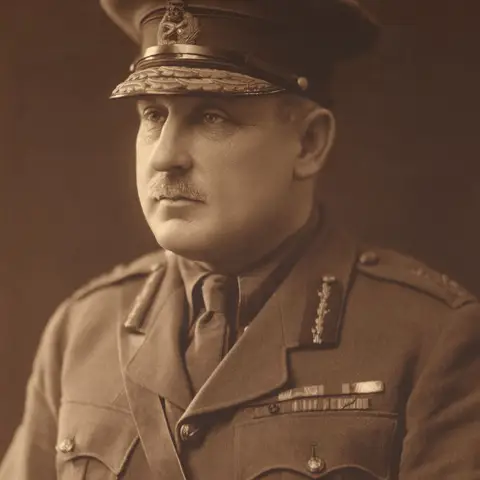
Major General Sir Charles Rosenthal saw action at Gallipoli and commanded the Australian 2nd Division at the end of the war. c.1918
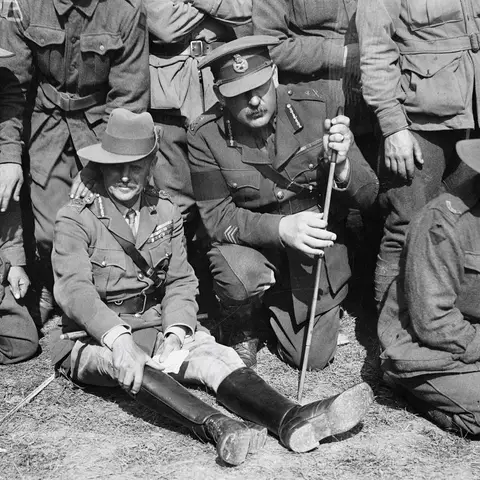
General Sir William Birdwood and Major General Charles Rosenthal, and a group of unidentified soldiers, watching an event in September 1918.
Unsurprisingly, not all commanders had the ability to adapt to the challenges of war. In many cases, these individuals were identified and swiftly replaced. Incompetence was one reason, but more often than not, it came as a result of the stresses and conditions of active service – as was the case with Lieutenant-Colonel William Bolton, who commanded the 8th Australian Battalion in 1915. Following the battle of Krithia, Bolton wrote to his divisional commander and asked to be relieved of his command: “I am broken down in body and mind … my nerve is completely gone, I have no confidence in myself and I shall never be able to take troops into action again.” As the war progressed, senior commanders moved to promote relatively youthful commanders who could withstand the rigours of war, which led to the appointment and selection of commanders based on merit and suitability, rather than always deferring to seniority, that is, the time a man had served.
Putting lessons into practice
The appointment of suitable commanders was important, as they were often instrumental in setting the conditions for learning in their own formations. Many commanders actively sought the opinions and comments of subordinates to build a better picture after battle of what went right and what went wrong. Following the battle of Loos in 1915, the 7th Division’s commander requested information and recommendations from subordinates about improvements to training and arrangements for battle. Similarly, Fourth Army’s commander, General Sir Henry Rawlinson, and his chief of staff sought the opinions of subordinate commanders after the Somme campaign. Their aim was to ensure that vital experience was not lost, but instead retained for future use, particularly for new formations rotating into the Fourth Army. One divisional commander felt empowered to offer his feedback as there was an “obvious desire to get at the real truth” and to “obtain the ideas” of subordinate commanders.
Ensuring that existing lessons and experience were acted upon was also a key feature of Major-General John Monash’s command philosophy when he was in charge of the newly formed 3rd Australian Division. Monash was keen to ensure that the division benefited from both British and AIF experience. In a letter to his wife, he remarked how the AIF had “20 months experience of war [and] there will not be a minute wasted in teaching things the men will afterwards have to unlearn.” He realised the importance of ensuring his soldiers and officers were well trained in the basics of reconnaissance, and writing orders and messages. Whether it was through live-fire exercises, digging trench systems, or requesting “experienced officers” from France to benefit from their “better understanding of requirements”, Monash imbued his force with a “can do” culture and a respect for professionalism.
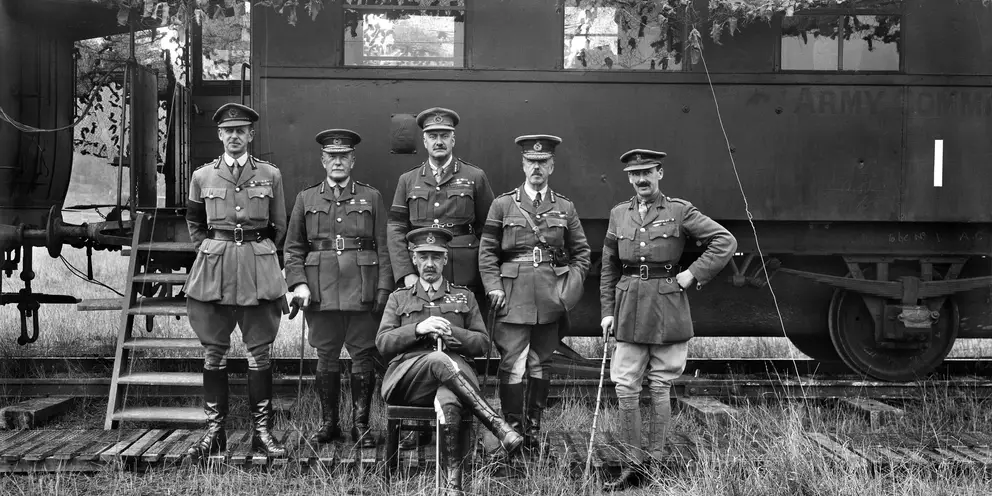
General Sir Henry Rawlinson with his senior Staff Officer (all unidentified) in front of Fourth Army Advanced Headquarters, a camouflaged railway train, at Montigny Farm, near Peronne. 17 October 1918
Commanders’ philosophies and approaches to learning went beyond the identification and exploitation of lessons. Their attitude was often vital to the development and promotion of new technologies. We see this with the adoption of the creeping (or rolling) barrage, the widespread use of the Australian “Wombat” boring machine for tunnelling operations, and the eventual development of the tank. Commanders played an important role in supporting military innovators and were not all as technophobic as popular portrayals would have us believe. As one junior officer remarked, “I found officers of high rank almost too receptive to novel proposals, especially when they were based on anything mysterious or scientific.”
The personal preferences and actions of commanders could lead to important developments, whether in the promotion of technology or seeking out critique from subordinates. Yet this personality-driven approach masked an underlying problem that was never really solved during the war: there was no official, army-wide system for turning good ideas and experiences into actionable lessons. Some commanders did not know which lessons were the right ones, some ended up re-learning the same lessons, while certain lessons simply remained within one unit and were not disseminated to the wider Army. As a result, learning was very uneven and often incomplete.
The cost of war
Fighting wars is a human endeavour. Decisions that are taken can be both rational and irrational, conscious and unconscious. The First World War revealed some commanders to be over-promoted, out of their depth, ill-suited and ill-equipped to deal with the stresses and strains of modern war. For many commanders, the war exacted a heavy price, destroying their mental and physical health; it could also kill their loved ones.
“I never felt so proud of him as I did when I said goodbye to him... I myself put in his hand a posy of poppies, cornflowers and daisies ... and with a kiss I left him.”
Lieutenant-General Sir Walter Congreve VC
Lieutenant-General Sir Walter Congreve VC, the commander of XIII Corps, lost his middle son, William, during the Somme campaign. “I never felt so proud of him as I did when I said goodbye to him,” Congreve wrote. “I myself put in his hand a posy of poppies, cornflowers and daisies ... and with a kiss I left him.” General Sir Edmund Allenby’s only son, Michael, was also killed on the Western Front, serving as an artillery officer in 1917. “Have you any news of my little boy today?” he would often ask when he knew Michael’s battery was in action.
While the stigma of incompetence, inhumanity, and callousness is hard to shift, most commanders were focused on learning and adapting in the best way they could, well aware that a wrong decision could lead to personal and national tragedy. Trial and error, dead-ends, and failure were as much a part of learning as success. Fighting and learning in the First World War required all personnel to embrace uncertainty, take risks, and become comfortable with change – lessons that are equally applicable today as they were over a hundred years ago.

